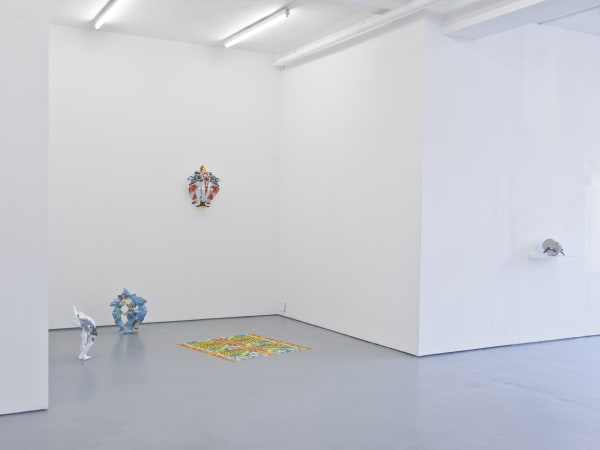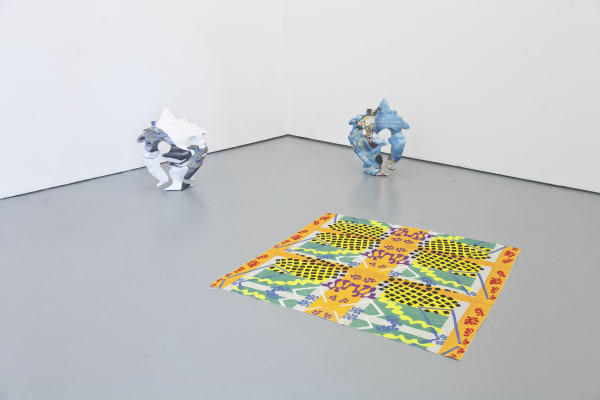Reverse Engineering: Waterside Contemporary, London
Hornby’s work is the physical meeting of historical critique and digital technology; behind hand-crafted sculptures of marble, resin or bronze are computer-generated models, expanding shapes, silhouettes and shadows into manifest examples of the collusion between disparate ideas.
Nick Hornby’s Masks point to a fabled meeting of 1907 between Matisse and Picasso in which a collection of African masks inspired the invention of Cubism only weeks later. This story encapsulates the familiar grand narratives of art history: the myth of genius, inspiration, otherness, but also reflects on the necessary subtleties and gaps between them. Hornby replicates these broad strokes with precision and control: starting with a Matisse gouache, he manipulates the inherited form to arrive at a plausible back-story.
Hornby’s work is the physical meeting of historical critique and digital technology; behind hand-crafted sculptures of marble, resin or bronze are computer-generated models, expanding shapes, silhouettes and shadows into manifest examples of the collusion between disparate ideas.
With Good Intentions, Núria Güel and Levi Orta started acquiring historical artefacts from areas affected by war and conflict, undertaking to care for and preserve them until they can be safely returned to their place of origin. This operation – funded by donations - both mirrors and contradicts collecting narratives of great institutions of Western civilisation.
Güell’s practice exploits established systems of power and their effects on everyday realities. Her work, often originating from a personal or corporate action, materialises where subjectivity is artificially limited by institutions such as governments, and where moral and legal realms are not in alignment.
Nicoline van Harskamp uses varieties of internationally-spoken English to propose a future shaped by the ubiquity and constant evolution of the language, and its inevitable divergence from hegemonic norms. Portrait of an Englishes Collector sees a fictional amateur linguist conduct a methodical, though scientifically frivolous study of the lingua franca spoken in remote parts of the world. Through a series of fractured phone conversations, he uses the International Phonetic Alphabet to collect fragments of pronunciation and language use.
Devised with actors, students, and sometimes linguist, van Harskamp’s performative actions, plays, documents and video works bring out the correspondence between content and the aesthetic framework in which it comes into force.
Marianna Christofides' Perennial Limbo is a portrait of the artist’s late father, consisting of some 400 cardboard sheets cut out by hand and held together with metal clamps. Each piece contains a manuscript fragment transferred from the subject’s diaries – here obscured and inaccessible lest the representation be disassembled.
Part of the cardboard head appears to be missing – repurposed by the artist in another work, where it serves as a topographical feature.
Working primarily in installation, film and text, Christofides studies the multiplicity of images that form consensus and collective memories, treating each as an imaginary document. Her collection of moments, objects, places and physical experiences – sometimes brought into gallery spaces wholesale, sometimes represented in poetic imagery - creates an illusion of traveling through a familiar yet fictitious world. Events can unravel at geological speeds, and whole lifetimes appear in singular objects.









